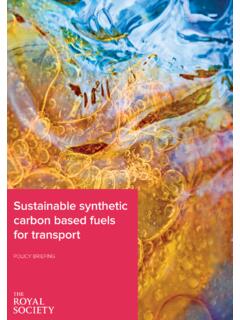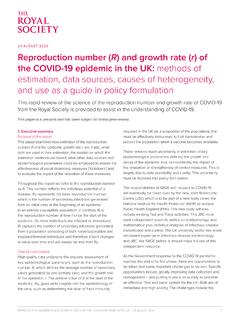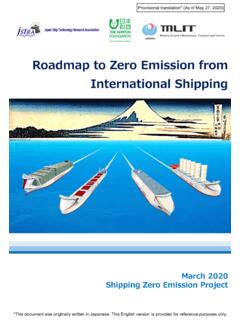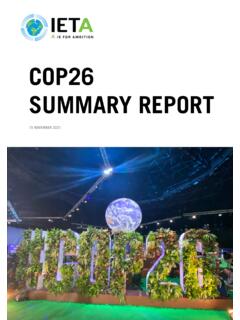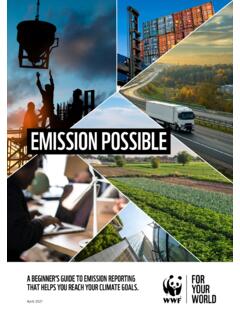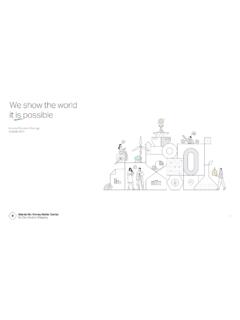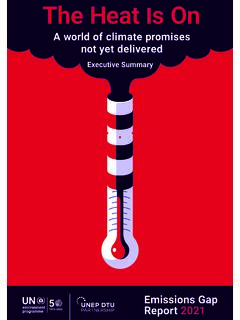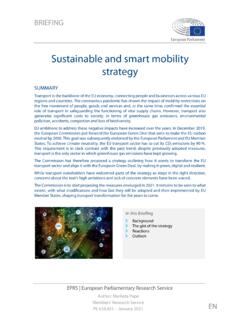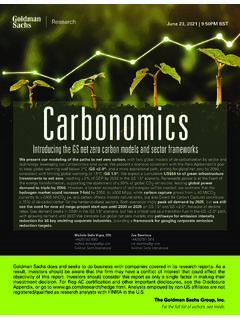Transcription of Ammonia: zero-carbon fertiliser, fuel and energy store
1 Ammonia: zero -carbon fertiliser, fuel and energy storePOLICY BRIEFINGC over image 2020 KBR Inc. All Rights : zero -carbon fertiliser, fuel and energy store Issued: February 2020 DES5711 ISBN: 978-1-78252-448-9 The Royal Society The text of this work is licensed under the terms of the Creative Commons Attribution License which permits unrestricted use, provided the original author and source are credited. The license is available at: are not covered by this report can be viewed online at: briefingPolitics and science frequently move on vastly different timescales. A policymaker seeking evidence on a new policy will often need the answer in weeks or months, while it takes years to design and undertake the research to rigorously address a new policy question.
2 The value of an extended investigation into a topic cannot be understated, but when this is not possible good evidence is better than none. The Royal Society s series of policy briefings is a new mechanism aiming to bridge that divide. Drawing on the expertise of Fellows of the Royal Society and the wider scientific community, these policy briefings provide rapid and authoritative syntheses of current evidence. These briefings lay out the current state of knowledge and the questions that remain to be answered around a policy question often defined alongside a summary 4 Introduction 6 Current ammonia storage and transport infrastructure 8 ammonia : health and environmental considerations 101.
3 The decarbonisation of ammonia production 12 Current ammonia production process brown ammonia 12 Blue ammonia production using blue hydrogen from steam methane reforming (SMR) with carbon capture and storage (CCS) 14 Green ammonia production using green hydrogen from water electrolysis 14 Research opportunities 16 Novel methods for green ammonia synthesis 192. New zero -carbon uses for green ammonia 21 The storage and transportation of sustainable energy 22 ammonia for the transportation and provision of hydrogen 26 Technological opportunities for ammonia as a transport fuel 28 The use of ammonia in heating and cooling 32 energy conversion efficiency 323.
4 international perspectives: activities and future opportunities 34 Japan 34 Australia 35 China 35 Conclusions 36 Annex A: Definitions 37 Annex B: Acknowledgements 38 ammonia : zero -CARBON FERTILISER, FUEL AND energy store 3 EXECUTIVE SUMMARYE xecutive summaryFuture zero -carbon energy scenarios are predicated on wind and solar energy taking prominent roles. Matching demand-driven energy provision with low-carbon energy security, from these intermittent sources, requires long-term sustainable energy storage.
5 This briefing considers the opportunities and challenges associated with the manufacture and future use of zero -carbon ammonia , which is referred to in this report as green production of green ammonia has the capability to impact the transition towards zero -carbon through the decarbonisation of its current major use in fertiliser production. Perhaps as significantly, it has the following potential uses: As a medium to store and transport chemical energy , with the energy being released either by directly reacting with air or by the full or partial decomposition of ammonia to release hydrogen.
6 As a transport fuel, by direct combustion in an engine or through chemical reaction with oxygen in the air in a fuel cell to produce electricity to power a motor. To store thermal energy through the absorption of water and through phase changes between material states (for example liquid to gas).With its relatively high energy density of around 3 kWh/litre and existing global transportation and storage infrastructure, ammonia could form the basis of a new, integrated worldwide renewable energy storage and distribution solution. These features suggest ammonia could readily be a competitive option for transporting zero -carbon energy by road, rail, ship or has been used as a fertiliser for over a century and has been of fundamental importance in providing sufficient food to feed our planet.
7 Current ammonia manufacture is predominantly achieved through steam reforming of methane to produce hydrogen which is fed into ammonia synthesis via the Haber Bosch process. ammonia production currently accounts for around of global carbon dioxide emissions. Decarbonisation options mainly target the production of hydrogen either by integrating carbon capture and storage or through the production of hydrogen via water electrolysis using sustainable use does present challenges. Human alteration of the global nitrogen cycle, mainly through the application of ammonia -based fertilisers, is a contributor to global declines in biodiversity, widespread air quality problems and greenhouse gas emissions across the world.
8 New uses of ammonia , in the storage, transportation and utilisation of renewable energy , must therefore be decoupled from environmental impact, with particular emphasis on avoiding and effectively eliminating emissions of nitrogen oxides and ammonia affordable and effective solutions to all these challenges, demonstrating technical feasibility, developing the appropriate regulations and implementing safety procedures will be vital to open up more flexible routes on a global scale towards a low-carbon energy the coming decades, ammonia has the potential to make a significant impact through enabling the transition away from our global dependence on fossil fuels and contributing, in substantial part, to the reduction of greenhouse gas emissions.
9 The production of green ammonia has the capability to impact the transition towards ammonia : zero -CARBON FERTILISER, FUEL AND energy STOREEXECUTIVE SUMMARYFIGURE 1 WaterAirElectrolysisSeparationSustainabl e electricityHABER-BOSCH PROCESSS ustainable electricityHydrogenNitrogenEXISTING USESF ertilisersRefrigerationExplosivesTextile s and pharmaceuticalsEXPANDED USES(after cracking) in PEM fuel cellUsing alkaline fuel cellDirect combustion engine/turbineEnergy store to electricity generationTransport fuelPhase change/absorption bulk thermal storageHeat transferAmmoniaGreen ammonia production and combustion engine/turbineDirectly in solid oxide fuel cell(after cracking)
10 In PEM fuel cellAMMONIA: zero -CARBON FERTILISER, FUEL AND energy store 5 INTRODUCTIONI ntroductionAmmonia has had a profound global impact since the discovery of its synthesis from hydrogen and nitrogen by Haber and Bosch in Germany at the beginning of the 20th century. The key role of ammonia today is as the basic feedstock for inorganic fertilisers that currently support food production for around half of the world s is an efficient refrigerant that has been used extensively since the 1930s in industrial cold stores, food processing industry applications and increasingly in large-scale air-conditioning.





